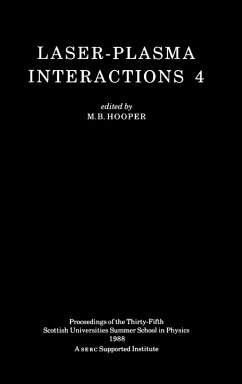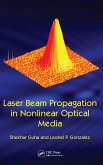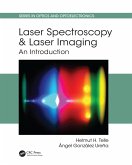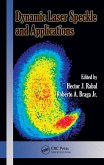Laser-Plasma Interactions 4 (eBook, PDF)
Redaktion: Hooper, M. B
196,95 €
196,95 €
inkl. MwSt.
Sofort per Download lieferbar

98 °P sammeln
196,95 €
Als Download kaufen

196,95 €
inkl. MwSt.
Sofort per Download lieferbar

98 °P sammeln
Jetzt verschenken
Alle Infos zum eBook verschenken
196,95 €
inkl. MwSt.
Sofort per Download lieferbar
Alle Infos zum eBook verschenken

98 °P sammeln
Laser-Plasma Interactions 4 (eBook, PDF)
Redaktion: Hooper, M. B
- Format: PDF
- Merkliste
- Auf die Merkliste
- Bewerten Bewerten
- Teilen
- Produkt teilen
- Produkterinnerung
- Produkterinnerung

Bitte loggen Sie sich zunächst in Ihr Kundenkonto ein oder registrieren Sie sich bei
bücher.de, um das eBook-Abo tolino select nutzen zu können.
Hier können Sie sich einloggen
Hier können Sie sich einloggen
Sie sind bereits eingeloggt. Klicken Sie auf 2. tolino select Abo, um fortzufahren.

Bitte loggen Sie sich zunächst in Ihr Kundenkonto ein oder registrieren Sie sich bei bücher.de, um das eBook-Abo tolino select nutzen zu können.
Laser-Plasma Interactions 4 is the fourth book in a series devoted to the study of laser-plasma interactions. Subjects covered include laser light propagation, instabilities, compression and hydrodynamics, spectroscopy, diagnostics, computer code, dense plasmas, high-power lasers, X-UV sources and lasers, beat waves, and transport processes.
- Geräte: PC
- mit Kopierschutz
- eBook Hilfe
Andere Kunden interessierten sich auch für
![Laser-Aided Diagnostics of Plasmas and Gases (eBook, PDF) Laser-Aided Diagnostics of Plasmas and Gases (eBook, PDF)]() K. MuraokaLaser-Aided Diagnostics of Plasmas and Gases (eBook, PDF)216,95 €
K. MuraokaLaser-Aided Diagnostics of Plasmas and Gases (eBook, PDF)216,95 €![Laser Resonators and the Beam Divergence Problem (eBook, PDF) Laser Resonators and the Beam Divergence Problem (eBook, PDF)]() Yurii A. Anan'evLaser Resonators and the Beam Divergence Problem (eBook, PDF)285,95 €
Yurii A. Anan'evLaser Resonators and the Beam Divergence Problem (eBook, PDF)285,95 €![CRC Handbook of Laser Science and Technology Supplement 2 (eBook, PDF) CRC Handbook of Laser Science and Technology Supplement 2 (eBook, PDF)]() Marvin J. WeberCRC Handbook of Laser Science and Technology Supplement 2 (eBook, PDF)392,95 €
Marvin J. WeberCRC Handbook of Laser Science and Technology Supplement 2 (eBook, PDF)392,95 €![Laser Safety (eBook, PDF) Laser Safety (eBook, PDF)]() Laser Safety (eBook, PDF)84,95 €
Laser Safety (eBook, PDF)84,95 €![Laser Beam Propagation in Nonlinear Optical Media (eBook, PDF) Laser Beam Propagation in Nonlinear Optical Media (eBook, PDF)]() Laser Beam Propagation in Nonlinear Optical Media (eBook, PDF)81,95 €
Laser Beam Propagation in Nonlinear Optical Media (eBook, PDF)81,95 €![Laser Spectroscopy and Laser Imaging (eBook, PDF) Laser Spectroscopy and Laser Imaging (eBook, PDF)]() Helmut H. TelleLaser Spectroscopy and Laser Imaging (eBook, PDF)73,95 €
Helmut H. TelleLaser Spectroscopy and Laser Imaging (eBook, PDF)73,95 €![Dynamic Laser Speckle and Applications (eBook, PDF) Dynamic Laser Speckle and Applications (eBook, PDF)]() Dynamic Laser Speckle and Applications (eBook, PDF)64,95 €
Dynamic Laser Speckle and Applications (eBook, PDF)64,95 €-
-
-
Laser-Plasma Interactions 4 is the fourth book in a series devoted to the study of laser-plasma interactions. Subjects covered include laser light propagation, instabilities, compression and hydrodynamics, spectroscopy, diagnostics, computer code, dense plasmas, high-power lasers, X-UV sources and lasers, beat waves, and transport processes.
Dieser Download kann aus rechtlichen Gründen nur mit Rechnungsadresse in A, B, BG, CY, CZ, D, DK, EW, E, FIN, F, GR, HR, H, IRL, I, LT, L, LR, M, NL, PL, P, R, S, SLO, SK ausgeliefert werden.
Produktdetails
- Produktdetails
- Verlag: Taylor & Francis eBooks
- Seitenzahl: 394
- Erscheinungstermin: 17. Dezember 2020
- Englisch
- ISBN-13: 9781000112146
- Artikelnr.: 60589345
- Verlag: Taylor & Francis eBooks
- Seitenzahl: 394
- Erscheinungstermin: 17. Dezember 2020
- Englisch
- ISBN-13: 9781000112146
- Artikelnr.: 60589345
- Herstellerkennzeichnung Die Herstellerinformationen sind derzeit nicht verfügbar.
Dr M B Hooper, Department of Physics and Applied Physics, University of Strathclyde, Glasgow G4 ONG, Scotland, UK.
INTRODUCTION TO THE PHYSICS AND APPLICATIONS OF LASER PRODUCED PLASMAS
M H KEY
INTRODUCTION
1. LASER FUSION
Direct drive
Indirect drive
Comparison of inertial fusion and magnetic fusion Future facilities
2. DENSE PLASMAS
3. HIGH INTENSITY LASER PLASMA INTERACTIONS
4. PARTICLE ACCELERATORS Wake field acceleration
5. XUV AND X
RAY SOURCES AND THEIR APPLICATIONS
6. XUV AND X
RAY LASERS
7. PARTICLE SOURCES
8. DEVELOPMENTS IN LASER TECHNOLOGY
REFERENCES
LASER LIGHT PROPAGATION AND INTERACTION WITH PLASMA
P. MULSER
1. CAPACITOR MODEL OF RESONANCE ABSORPTION
1.1 Linear resonance absorption
1.2 High amplitude electron waves and wavebreaking
2. ABSORPTION OF INTENSE fs LASER PULSES
2.1 Plasma parameters and the problem of absorption
2.2 Collision frequency under strong drift conditions
Excitation of plasma oscillations by a single fast particle
Collision frequencies
Screening and statistical independence
2.3 Anomalous skin effect
2.4 Ionisation dephasing
3. WAVE ACTION AND PROPAGATION IN MODULATED PLASMAS
3.1 Generalized ponderomotive action on single particles
3.2 Light propagation in periodically modulated plasmas REFERENCES
LASER
INDUCED RADIATION HYDRODYNAMICS: AN INTRODUCTION
R. SIGEL
1. INTRODUCTION
2. RADIATIVE TRANSPORT
2.1 Radiation confinement
2.2 The hydrodynamic equations
2.3 The transport'of energy by radiation 2.4 The maximum opacity theorem
3. SELF
SIMILAR SOLUTIONS
3.1 The Buckingham theorem and self
similarity
3.2 The isothermal rarefaction wave as an example of self
similar gas motion
3.3 The radiation driven ablative heat wave
4. EXPERIMENTS REFERENCES
LASER
DRIVEN INSTABILITIES IN LONG SCALELENGTH PLASMAS
II
W L KRUER
1. INTRODUCTION
2. STIMULATED RAMAN SCATTERING
3. EFFECT OF ION FLUCTUATIONS ON SRS
4. LASER BEAM FILAMENTATION
5. LASER BEAM SMOOTHING
6. SUMMARY REFERENCES
SPECTROSCOPY AND ATOMIC PHYSI
M H KEY
INTRODUCTION
1. LASER FUSION
Direct drive
Indirect drive
Comparison of inertial fusion and magnetic fusion Future facilities
2. DENSE PLASMAS
3. HIGH INTENSITY LASER PLASMA INTERACTIONS
4. PARTICLE ACCELERATORS Wake field acceleration
5. XUV AND X
RAY SOURCES AND THEIR APPLICATIONS
6. XUV AND X
RAY LASERS
7. PARTICLE SOURCES
8. DEVELOPMENTS IN LASER TECHNOLOGY
REFERENCES
LASER LIGHT PROPAGATION AND INTERACTION WITH PLASMA
P. MULSER
1. CAPACITOR MODEL OF RESONANCE ABSORPTION
1.1 Linear resonance absorption
1.2 High amplitude electron waves and wavebreaking
2. ABSORPTION OF INTENSE fs LASER PULSES
2.1 Plasma parameters and the problem of absorption
2.2 Collision frequency under strong drift conditions
Excitation of plasma oscillations by a single fast particle
Collision frequencies
Screening and statistical independence
2.3 Anomalous skin effect
2.4 Ionisation dephasing
3. WAVE ACTION AND PROPAGATION IN MODULATED PLASMAS
3.1 Generalized ponderomotive action on single particles
3.2 Light propagation in periodically modulated plasmas REFERENCES
LASER
INDUCED RADIATION HYDRODYNAMICS: AN INTRODUCTION
R. SIGEL
1. INTRODUCTION
2. RADIATIVE TRANSPORT
2.1 Radiation confinement
2.2 The hydrodynamic equations
2.3 The transport'of energy by radiation 2.4 The maximum opacity theorem
3. SELF
SIMILAR SOLUTIONS
3.1 The Buckingham theorem and self
similarity
3.2 The isothermal rarefaction wave as an example of self
similar gas motion
3.3 The radiation driven ablative heat wave
4. EXPERIMENTS REFERENCES
LASER
DRIVEN INSTABILITIES IN LONG SCALELENGTH PLASMAS
II
W L KRUER
1. INTRODUCTION
2. STIMULATED RAMAN SCATTERING
3. EFFECT OF ION FLUCTUATIONS ON SRS
4. LASER BEAM FILAMENTATION
5. LASER BEAM SMOOTHING
6. SUMMARY REFERENCES
SPECTROSCOPY AND ATOMIC PHYSI
INTRODUCTION TO THE PHYSICS AND APPLICATIONS OF LASER PRODUCED PLASMAS
M H KEY
INTRODUCTION
1. LASER FUSION
Direct drive
Indirect drive
Comparison of inertial fusion and magnetic fusion Future facilities
2. DENSE PLASMAS
3. HIGH INTENSITY LASER PLASMA INTERACTIONS
4. PARTICLE ACCELERATORS Wake field acceleration
5. XUV AND X
RAY SOURCES AND THEIR APPLICATIONS
6. XUV AND X
RAY LASERS
7. PARTICLE SOURCES
8. DEVELOPMENTS IN LASER TECHNOLOGY
REFERENCES
LASER LIGHT PROPAGATION AND INTERACTION WITH PLASMA
P. MULSER
1. CAPACITOR MODEL OF RESONANCE ABSORPTION
1.1 Linear resonance absorption
1.2 High amplitude electron waves and wavebreaking
2. ABSORPTION OF INTENSE fs LASER PULSES
2.1 Plasma parameters and the problem of absorption
2.2 Collision frequency under strong drift conditions
Excitation of plasma oscillations by a single fast particle
Collision frequencies
Screening and statistical independence
2.3 Anomalous skin effect
2.4 Ionisation dephasing
3. WAVE ACTION AND PROPAGATION IN MODULATED PLASMAS
3.1 Generalized ponderomotive action on single particles
3.2 Light propagation in periodically modulated plasmas REFERENCES
LASER
INDUCED RADIATION HYDRODYNAMICS: AN INTRODUCTION
R. SIGEL
1. INTRODUCTION
2. RADIATIVE TRANSPORT
2.1 Radiation confinement
2.2 The hydrodynamic equations
2.3 The transport'of energy by radiation 2.4 The maximum opacity theorem
3. SELF
SIMILAR SOLUTIONS
3.1 The Buckingham theorem and self
similarity
3.2 The isothermal rarefaction wave as an example of self
similar gas motion
3.3 The radiation driven ablative heat wave
4. EXPERIMENTS REFERENCES
LASER
DRIVEN INSTABILITIES IN LONG SCALELENGTH PLASMAS
II
W L KRUER
1. INTRODUCTION
2. STIMULATED RAMAN SCATTERING
3. EFFECT OF ION FLUCTUATIONS ON SRS
4. LASER BEAM FILAMENTATION
5. LASER BEAM SMOOTHING
6. SUMMARY REFERENCES
SPECTROSCOPY AND ATOMIC PHYSI
M H KEY
INTRODUCTION
1. LASER FUSION
Direct drive
Indirect drive
Comparison of inertial fusion and magnetic fusion Future facilities
2. DENSE PLASMAS
3. HIGH INTENSITY LASER PLASMA INTERACTIONS
4. PARTICLE ACCELERATORS Wake field acceleration
5. XUV AND X
RAY SOURCES AND THEIR APPLICATIONS
6. XUV AND X
RAY LASERS
7. PARTICLE SOURCES
8. DEVELOPMENTS IN LASER TECHNOLOGY
REFERENCES
LASER LIGHT PROPAGATION AND INTERACTION WITH PLASMA
P. MULSER
1. CAPACITOR MODEL OF RESONANCE ABSORPTION
1.1 Linear resonance absorption
1.2 High amplitude electron waves and wavebreaking
2. ABSORPTION OF INTENSE fs LASER PULSES
2.1 Plasma parameters and the problem of absorption
2.2 Collision frequency under strong drift conditions
Excitation of plasma oscillations by a single fast particle
Collision frequencies
Screening and statistical independence
2.3 Anomalous skin effect
2.4 Ionisation dephasing
3. WAVE ACTION AND PROPAGATION IN MODULATED PLASMAS
3.1 Generalized ponderomotive action on single particles
3.2 Light propagation in periodically modulated plasmas REFERENCES
LASER
INDUCED RADIATION HYDRODYNAMICS: AN INTRODUCTION
R. SIGEL
1. INTRODUCTION
2. RADIATIVE TRANSPORT
2.1 Radiation confinement
2.2 The hydrodynamic equations
2.3 The transport'of energy by radiation 2.4 The maximum opacity theorem
3. SELF
SIMILAR SOLUTIONS
3.1 The Buckingham theorem and self
similarity
3.2 The isothermal rarefaction wave as an example of self
similar gas motion
3.3 The radiation driven ablative heat wave
4. EXPERIMENTS REFERENCES
LASER
DRIVEN INSTABILITIES IN LONG SCALELENGTH PLASMAS
II
W L KRUER
1. INTRODUCTION
2. STIMULATED RAMAN SCATTERING
3. EFFECT OF ION FLUCTUATIONS ON SRS
4. LASER BEAM FILAMENTATION
5. LASER BEAM SMOOTHING
6. SUMMARY REFERENCES
SPECTROSCOPY AND ATOMIC PHYSI







